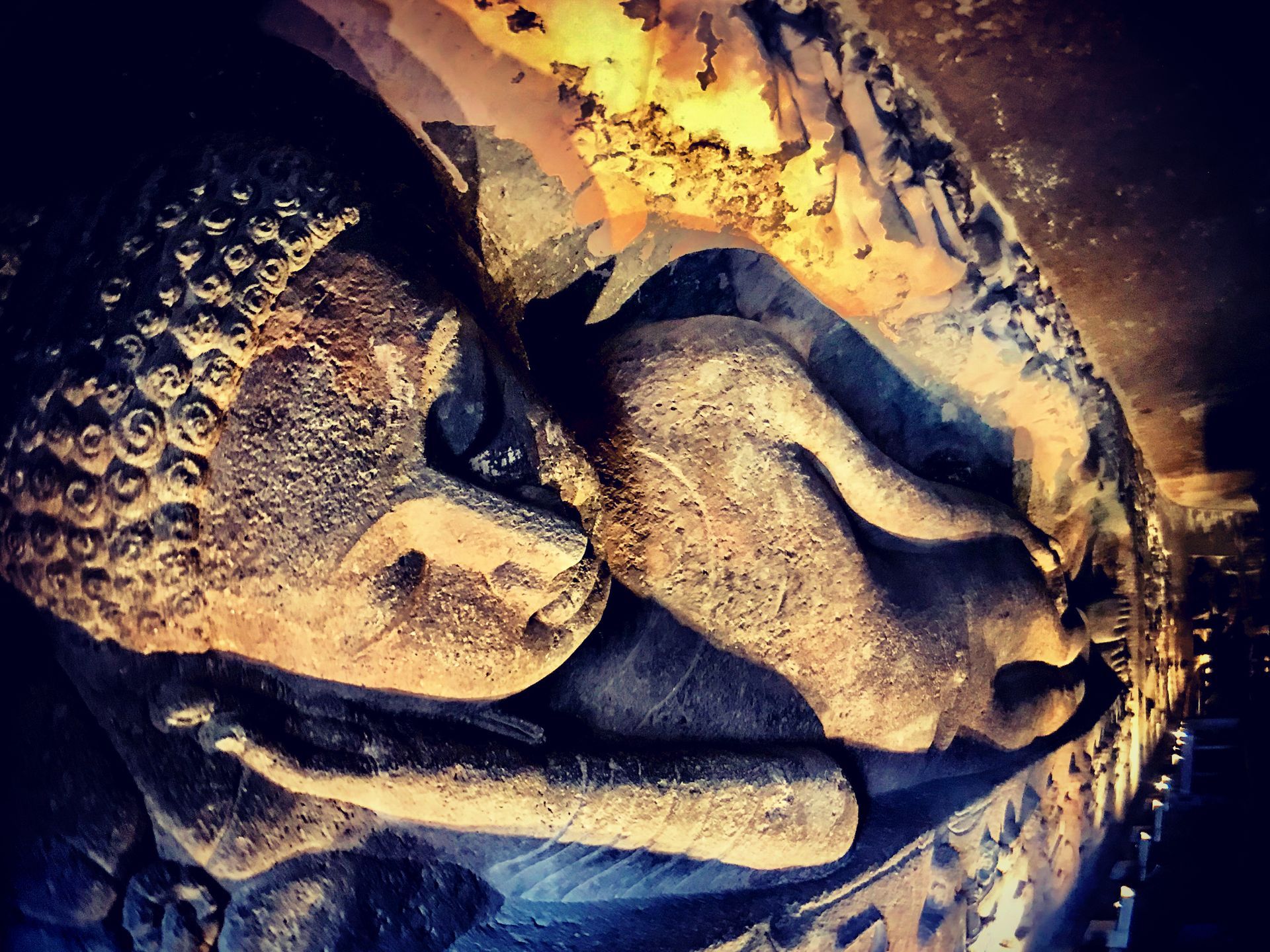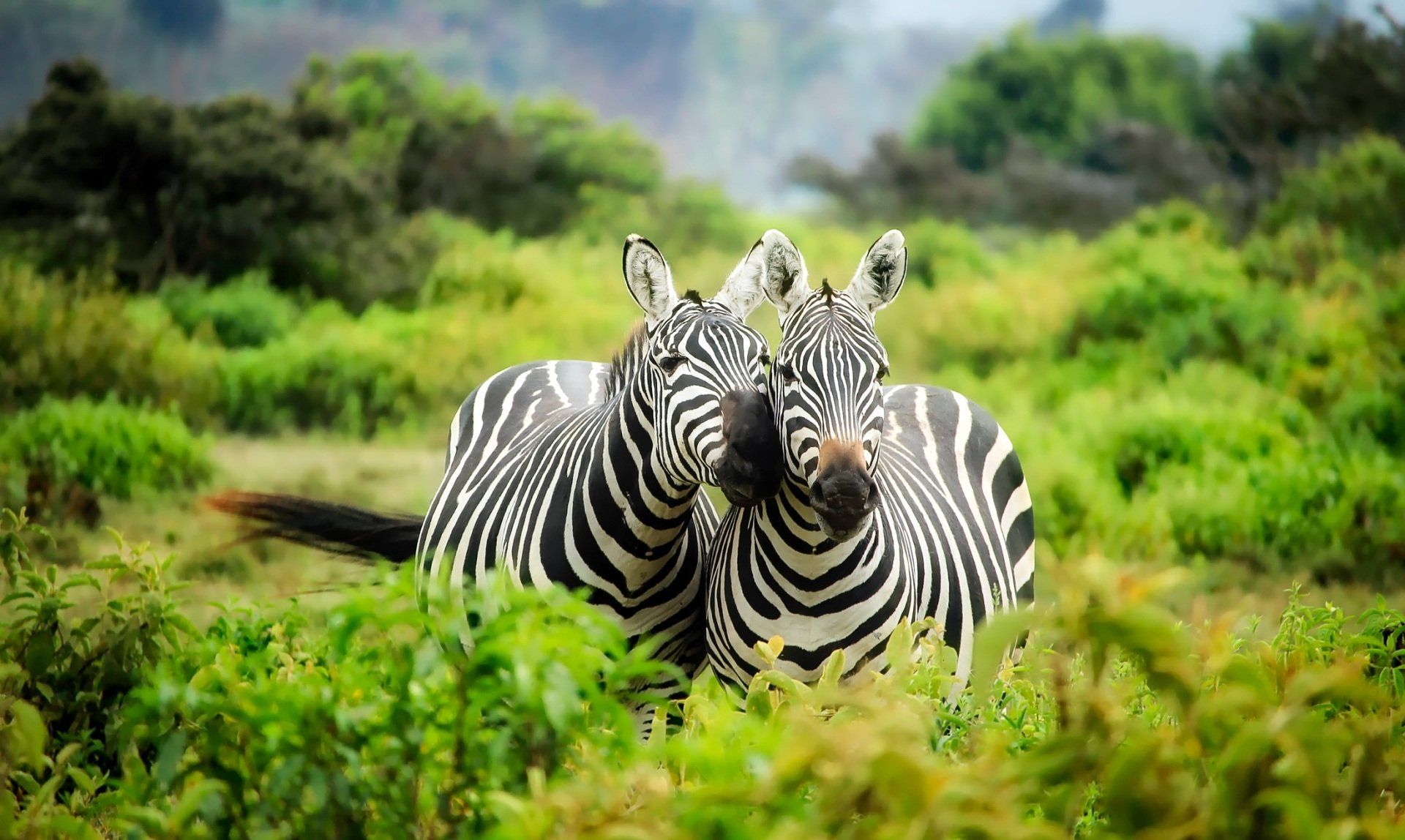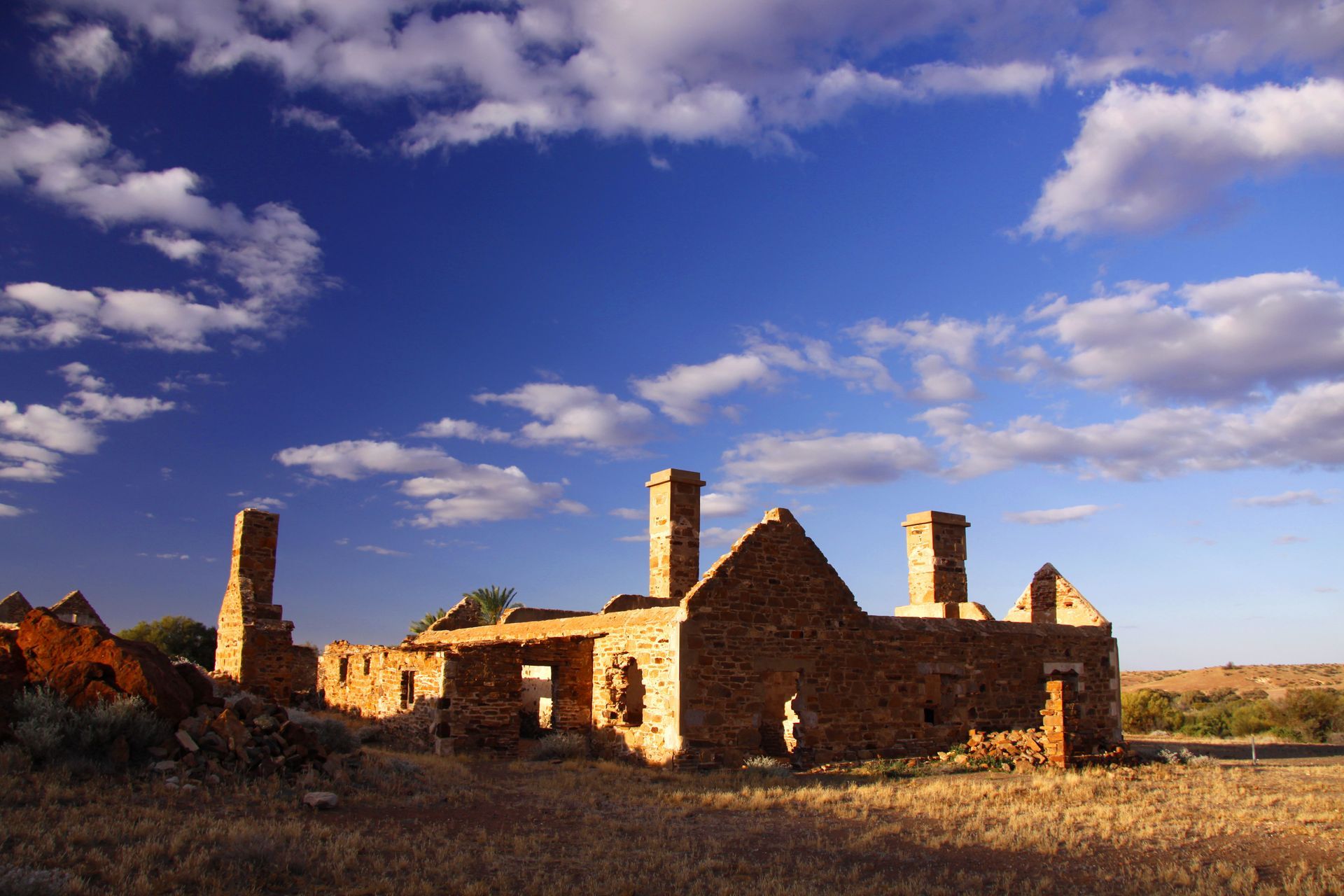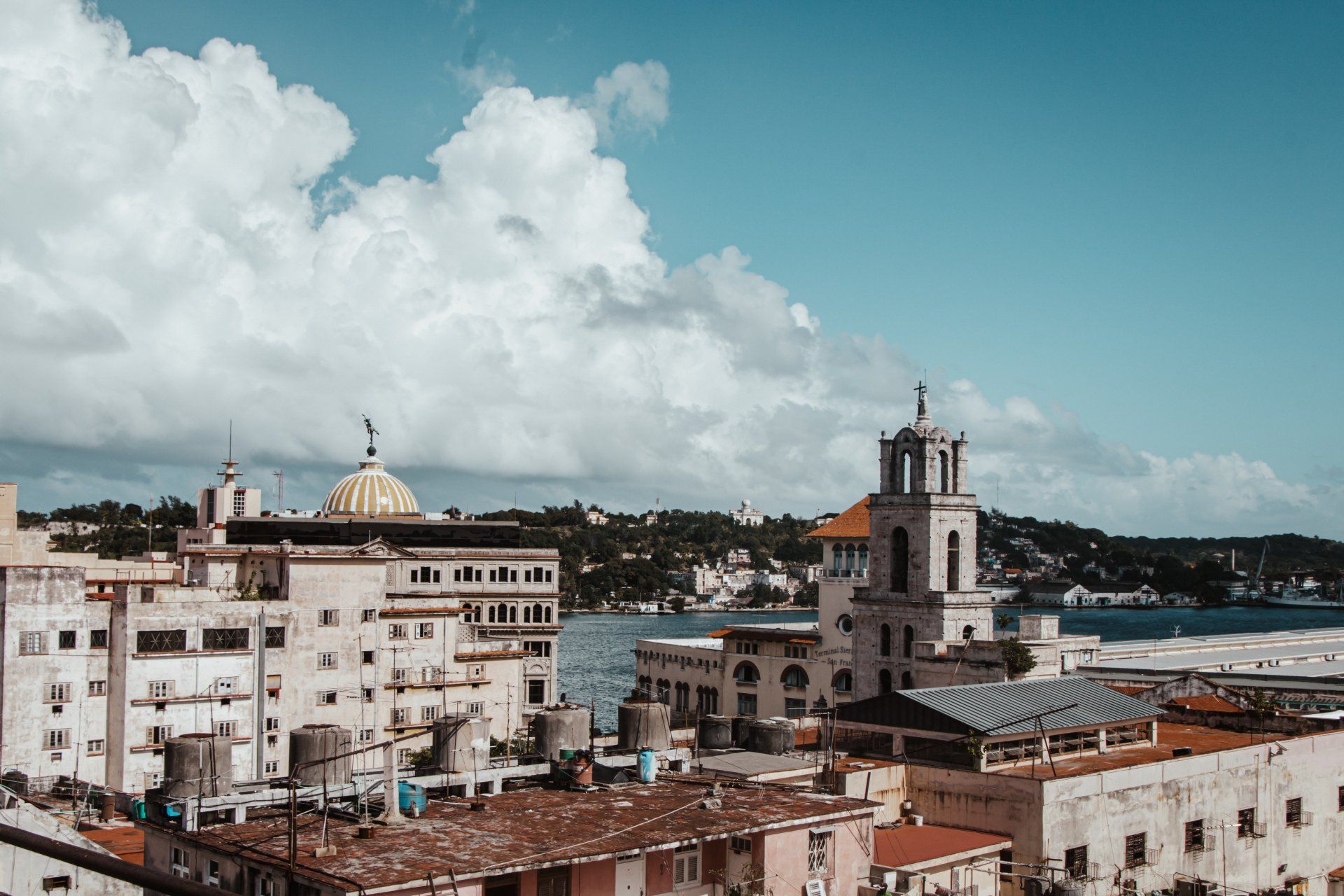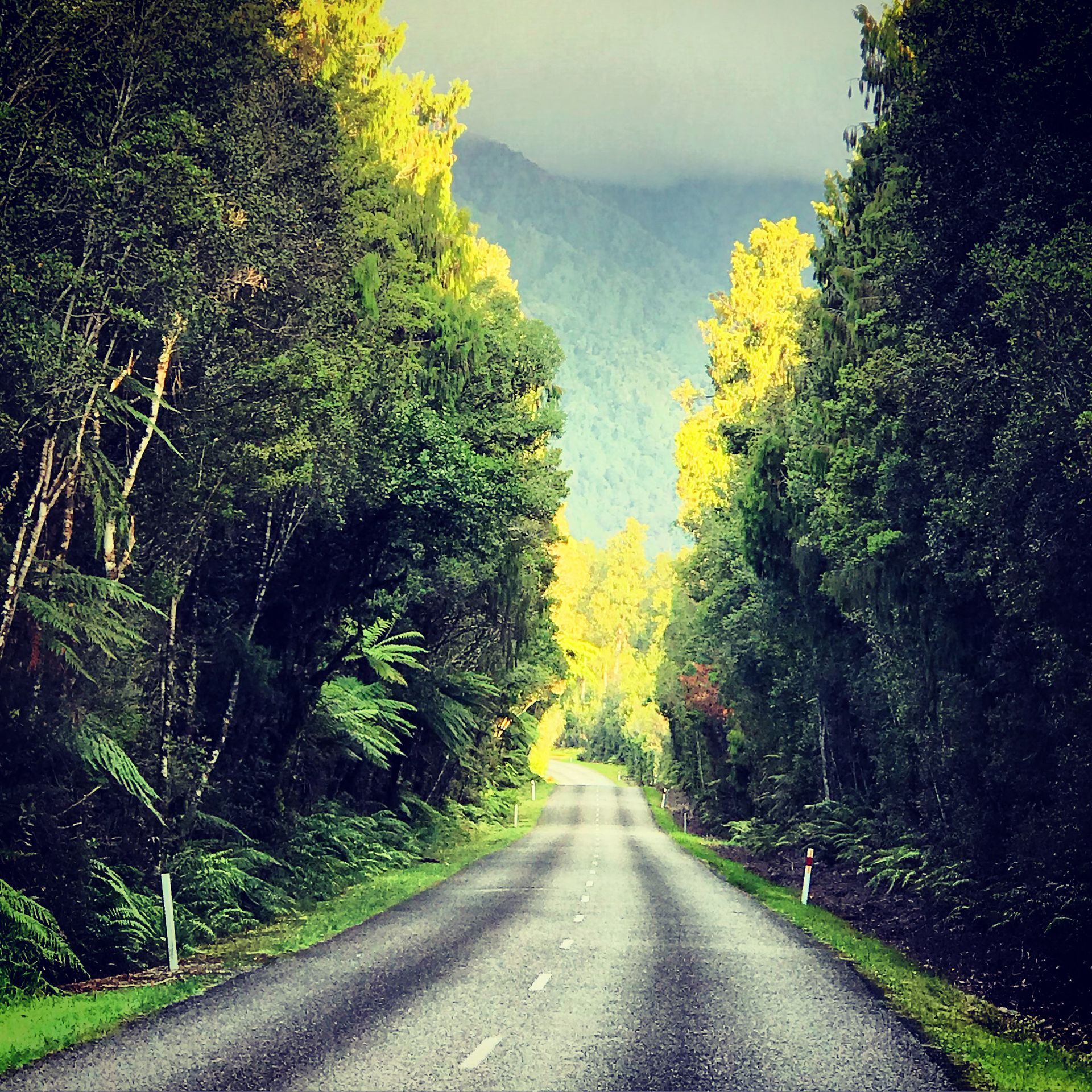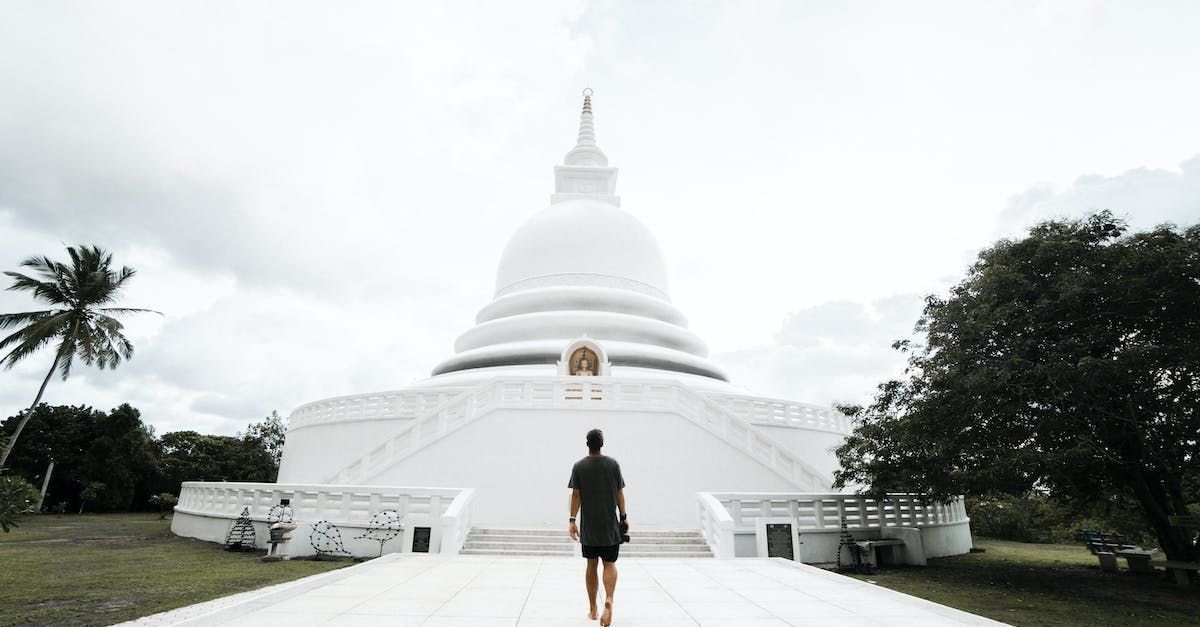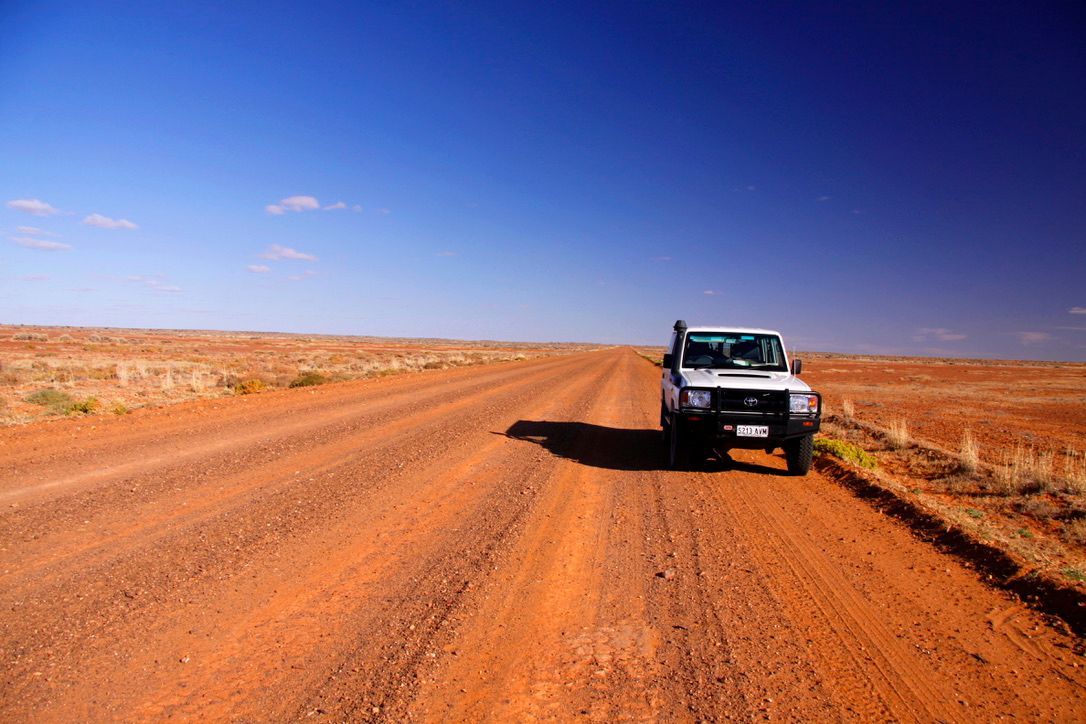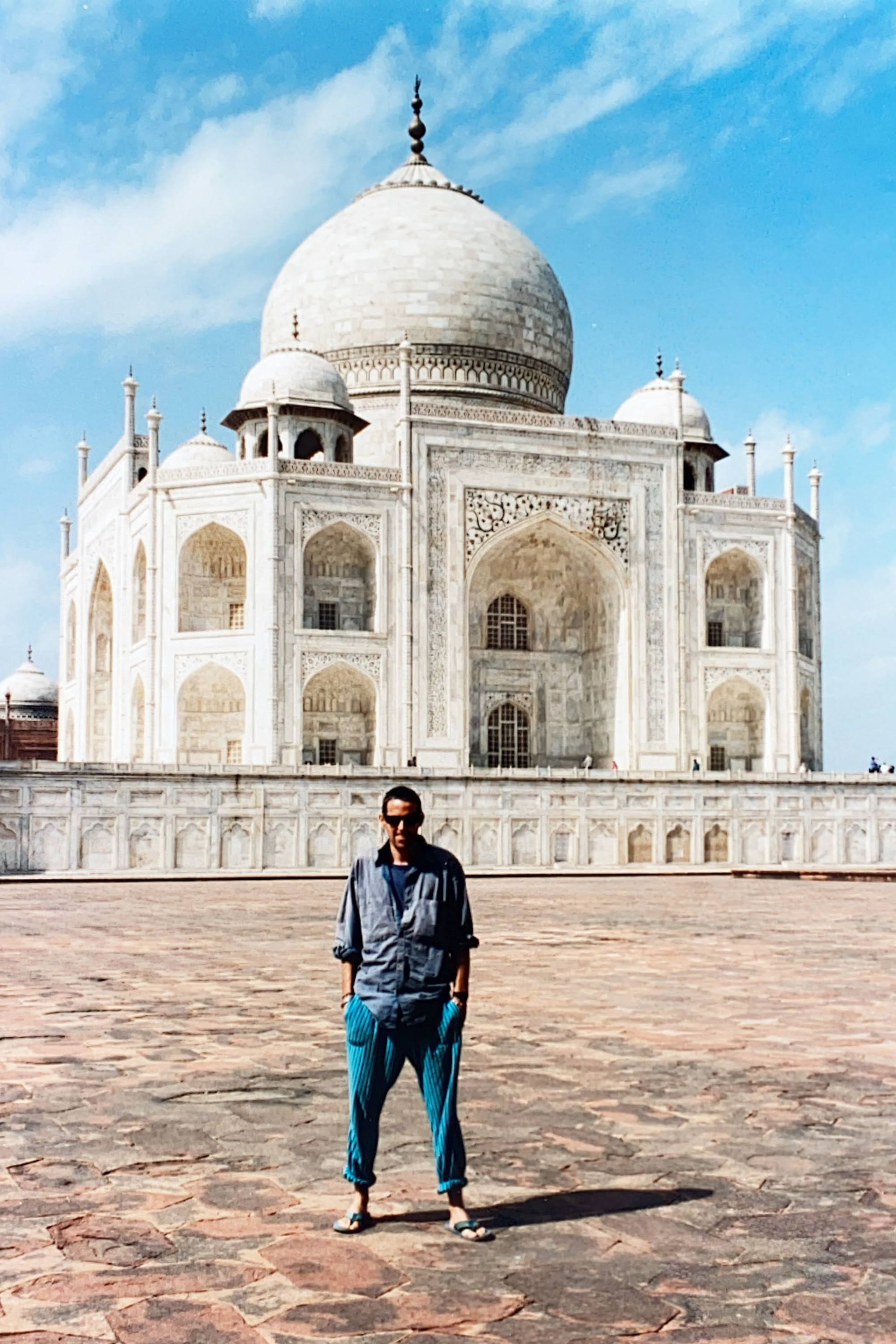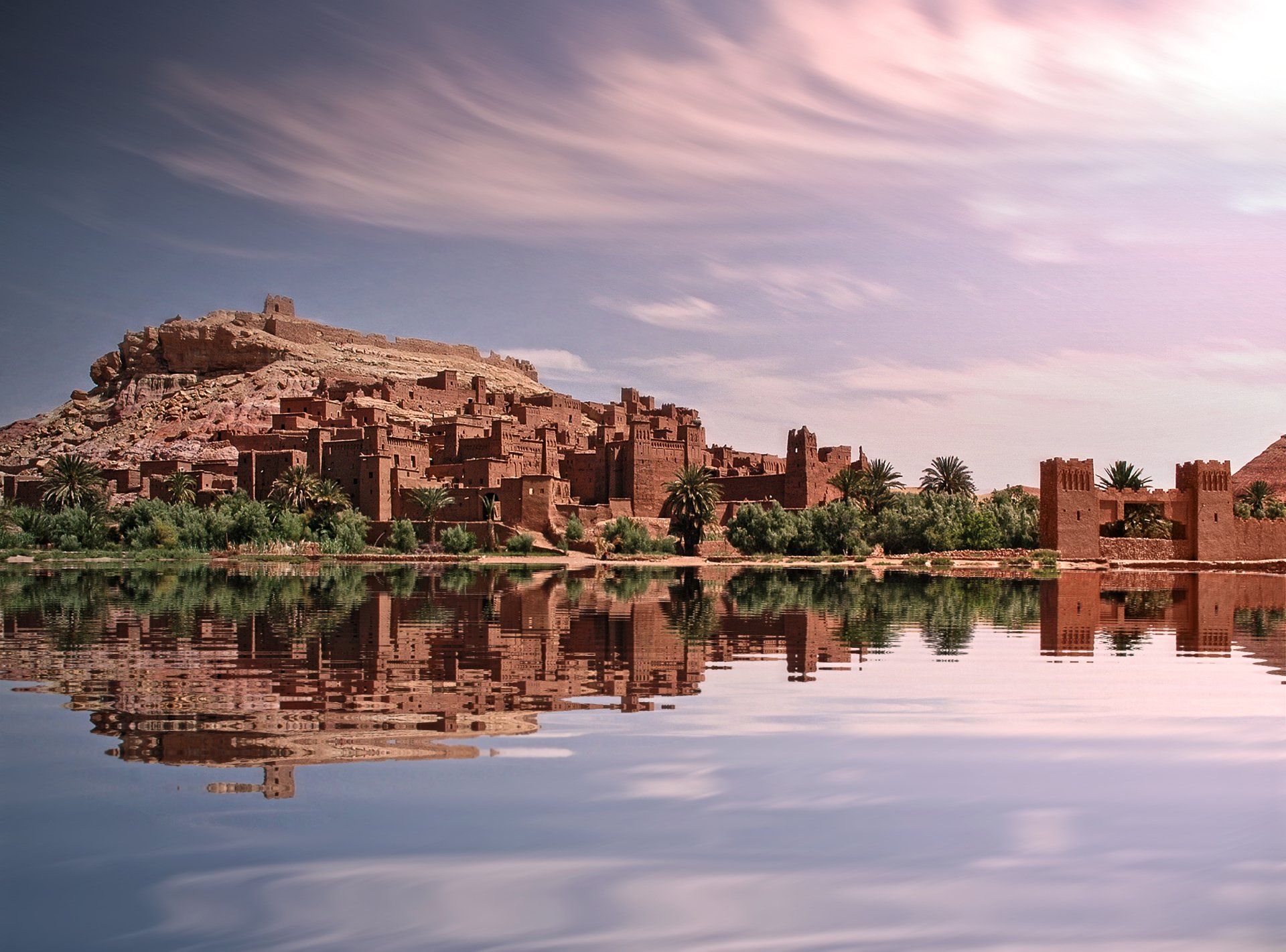…a long, basso profundo chant which echoed hollowly inside the temple.
It was almost silent in the cavern. The air was cool, and fragrant with the aroma of polished teak. The only light filtered in through the narrow doorway, with its carved lintel and ornately-decorated flanking columns. I was barefoot. The floor of the cavern, polished smooth by the passage of countless other bare feet before mine, was cold and slightly damp. At the rear of the cavern, half hidden in darkness, a statue of the Buddha, composed and serene, sat in asana.
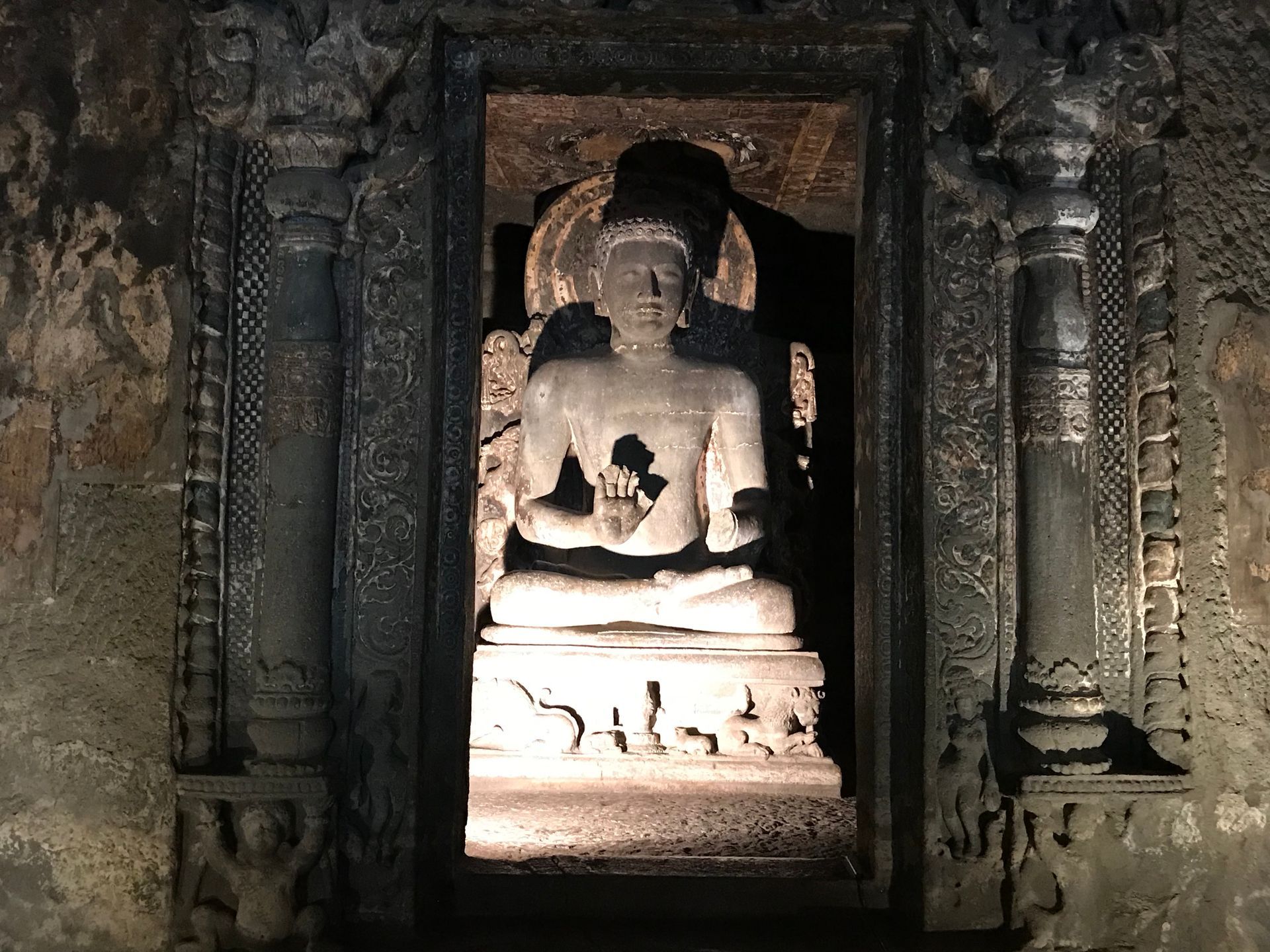
The Ajanta Caves are carved into the wall of a gorge cut over millennia into the basalt rock of the Deccan Traps, two hour’s drive north-east of Aurangabad. The soft, black rock was erupted by the Deccan Volcanoes 65 million years ago as India passed over the Reunion Hotspot (see The Great Flood Part 1 ). It had lain on India’s western flank as the continent moved north and, eventually, slammed into the underside of Asia. As the continent pushed further north it raised up the Himalayas, changing the climatic patterns of India as it did so. The icey pavilions of the Himalayas created a barrier to the moist air flowing off the Arabian Sea towards the centre of Asia. The air was now forced to rise in order to flow over the mountains. As the air rose, the moisture within condensed and fell as rain. Lots of rain. The Monsoon was born.
The annual monsoonal floods began eroding the rocks of the Deccan Traps. It carved gorges and valleys. It shaped the ridges into narrow knife-edges. It sculpted the canyon walls into smooth billows and ledges. Waterfalls tumbled from vertiginous declivities. Rivers curled over beds of boulders that had tumbled from the heights. Forests grew in profusion, their roots and branches probing into every crevice and crack. Caves dotted the landscape: bubbles in the solid matrix of stone where gases had been trapped in the erupting lava. Eventually, men discovered the caves.
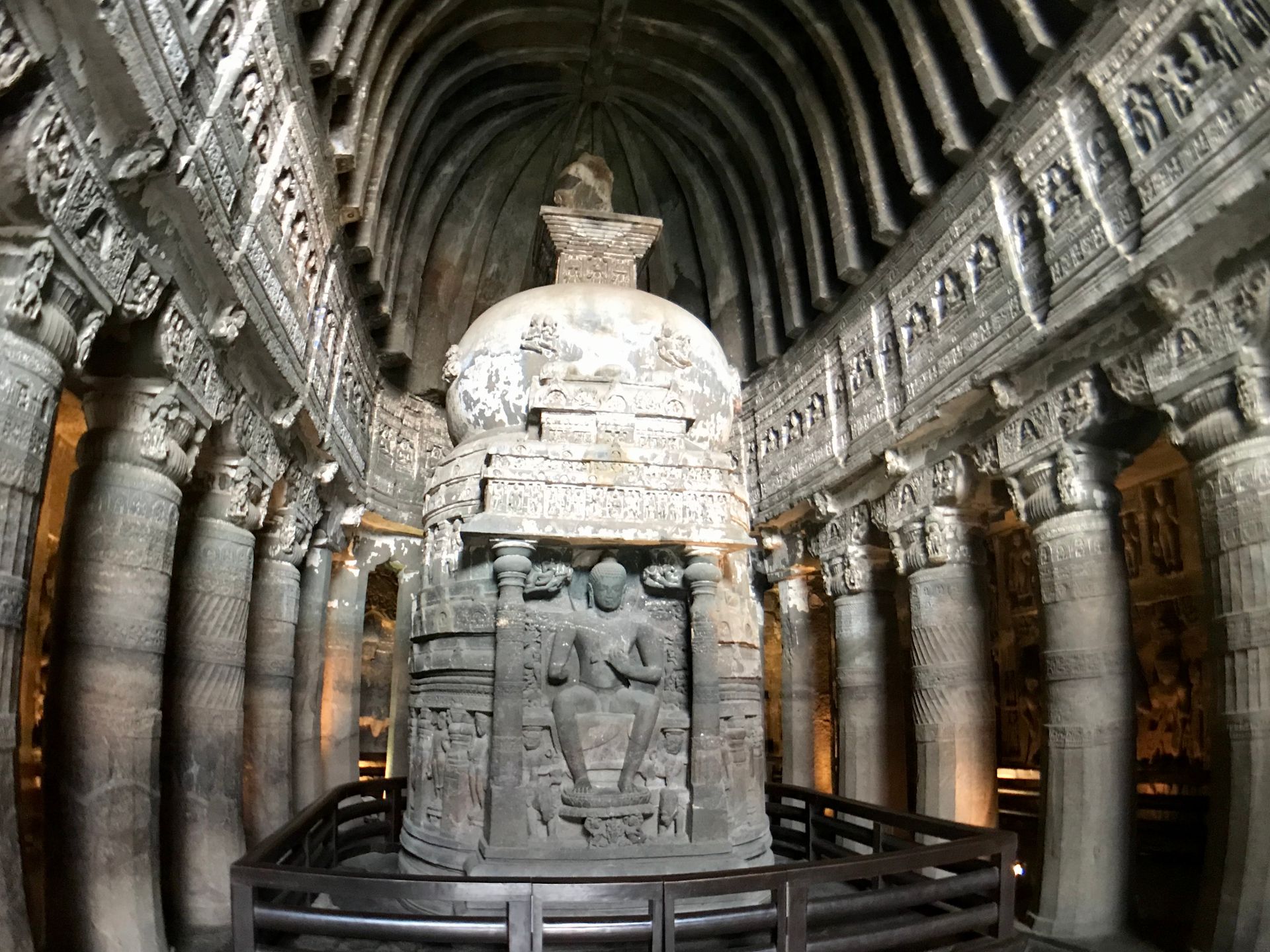
Beginning in the second century BCE (around 2,200 years ago), Buddhist monks began enlarging the caves at Ajanta. They carved elaborate decorations and effigies of the Buddha. They carved prayer halls and monasteries, temples and kitchens, cells for meditation and rooms for contemplation. When they ran out of natural caves to decorate, they began carving new ones. With endless patience, and the simplest of tools, they dug and scraped. The caves were works of art, affirmations in living stone to their deity, the Buddha.
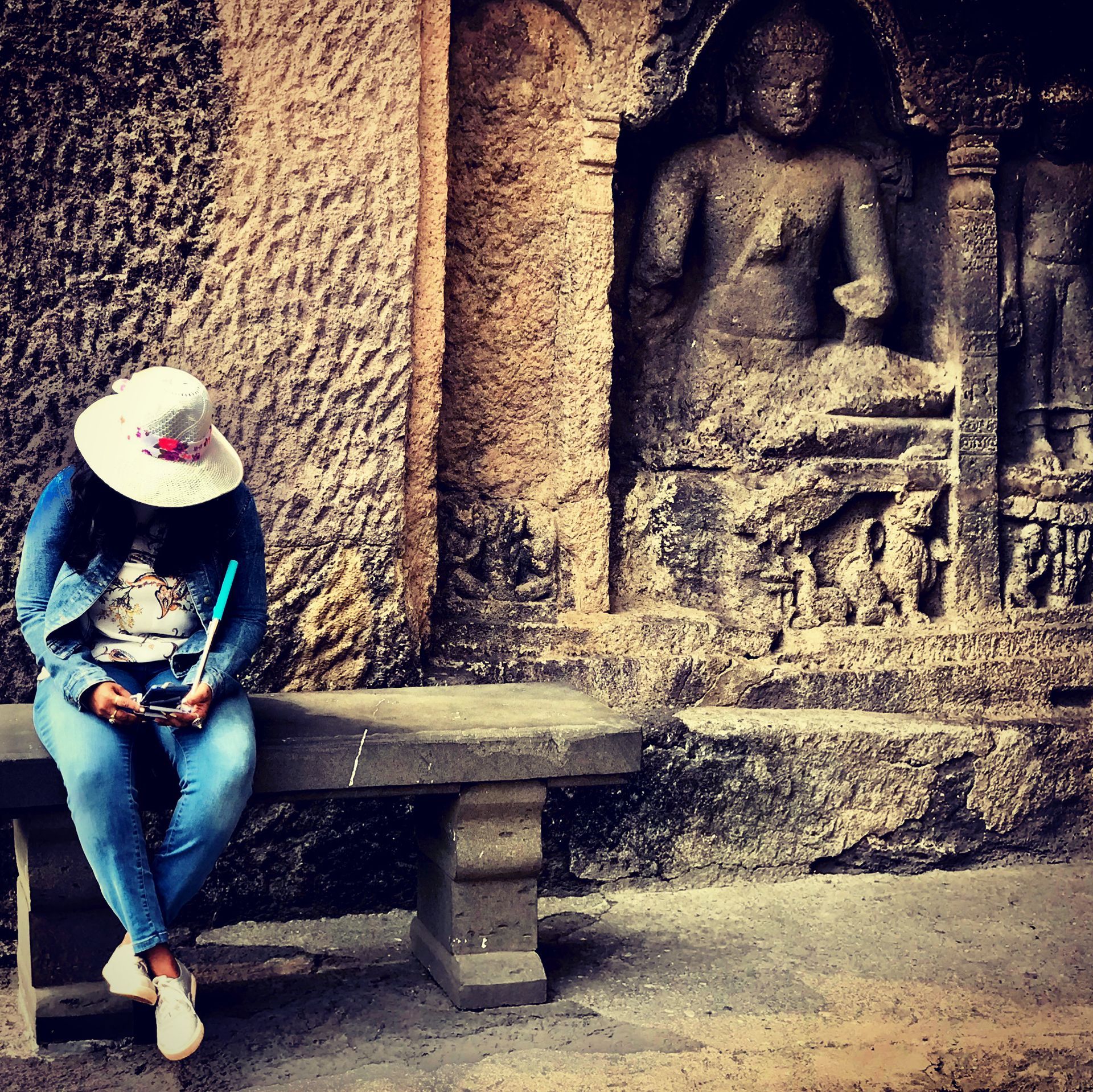
I spent hours in the caves. Each one was similar but at the same time completely different: the sound of one hand clapping. In one cave, a Japanese tourist stood before a statue of the Buddha and sang a long, basso profundo chant which echoed hollowly inside the temple. In another, a statue of the Buddha reclining, stretched for twenty metres along the wall. Many of the caves were decorated with paintings depicting emotions in pose, form and colour. Some were completely bare of decoration.
The monks of Ajanta kept up their cave carving for seven hundred years. And then, around AD600, they just stopped. In one cave, the floor was only half excavated. Its pillars and platforms still bear the marks of their tools. There were no decorations. It was as if they had finished work one day and never returned. No one knows why the work stopped. Perhaps some great environmental catastrophe occurred. Perhaps the region was over-run by invaders. Perhaps they just got sick of scratching holes in the ground.
But their work remains, carved into the black, crystalline basalt erupted so long ago, and so far away, during the great flood.
